Guide to Drone 3D Scanning in the USA

Drone-based 3D scanning is changing how teams collect site data. Contractors, developers, and planners now expect faster, clearer surveys. Traditional ground work takes time and often slows projects. A drone with LiDAR or a high-resolution camera can map a site in minutes. That speed creates accurate 3D models and safer fieldwork.
Understanding 3D Scanning Services—The Foundation of Modern Spatial Data
3D scanning turns the real world into precise digital data. It produces dense point cloud data made of XYZ coordinates. Each point marks an exact location on the ground or a structure. Put those points together and you get a digital replica of the site.
We use two main capture methods. Photogrammetry converts many overlapping photos into a textured 3D mesh. LiDAR shoots laser pulses and measures return times to map elevation. Both methods produce orthomosaics, meshes, and georeferenced deliverables. These outputs form digital twins used for planning, modeling, and analysis.
This data supports volume calculations, structural checks, and site planning. It replaces guesswork with exact measurements and usable geospatial data. For non-technical stakeholders, this clarity reduces surprises and speeds approvals.
Why Drone-Based 3D Scanning is the Future of Data Collection
Drones change the equation for survey speed. One well-planned flight can cover 100 acres in about an hour. That same job used to take days of boots-on-ground work. Drones also cut travel, staging, and labor costs.
Accuracy is no longer a trade-off for speed. RTK drones provide centimeter-level positioning during the flight. That yields sub-5 cm accuracy in many workflows. Flyovers done weekly or daily keep models current for progress tracking. Compare models over time and you see real, measurable change.
Safety improves too. Drones inspect steep slopes, tall towers, and fragile sites without putting crews at risk. In short, drone-based 3D scanning offers speed, precision, and safety in one package.
The Core Technologies Powering Modern 3D Scanning Services
LiDAR Scanning — Light Detection and Ranging Explained
LiDAR is essentially a laser rangefinder on a drone. The sensor emits fast pulses and listens for returns. Each return gives a distance value. GPS and orientation data place every point in space. The result is a dense, accurate point cloud. LiDAR often records multiple returns per pulse. That reveals ground under tree canopy as well as vegetation and structures. Engineers use those models for terrain reconstruction and topographic 3D modeling.
Photogrammetry — Turning 2D Images into 3D Models
Photogrammetry relies on overlapping aerial photos captured with drone aerial photography techniques. The drone flies a grid pattern and captures dozens or hundreds of images. Software finds matching points and triangulates their positions. The output is a colorized point cloud, a textured mesh, and an orthomosaic. Photogrammetry is excellent for visual detail. When combined with RTK, it reaches survey-grade accuracy for many projects.
RTK and PPK Systems for Accuracy
RTK provides real-time GNSS corrections to the drone. PPK saves raw GNSS data to correct after the flight. Both methods reduce the number of ground control points needed. Either approach will often deliver centimeter-level accuracy for mapping and modeling. RTK gives instant position confidence; PPK helps when signal reception is inconsistent.
Cloud Processing and Smart Analytics
After capture, data moves to processing platforms. These tools align imagery, filter noise, and build point clouds. They also creating accurate orthomosaics maps, DTMs, and DSMs. Modern platforms speed this work with automation and intelligent tools. Feature classification tags buildings, roads, and vegetation automatically. That saves time on manual cleanup and handoff to engineers. The result is faster delivery of usable geospatial data and clearer insight for project teams.
Key Industries Using Drone 3D Scanning Services in the USA
Construction and Civil Engineering
Drones streamline construction mapping, creating topo surveys and as-built BIM models. Weekly flights track progress and earthwork volumes. Stockpile checks are fast, while remote inspections improve safety, documentation, and efficiency.
Real Estate and Architecture
Aerial 3D scans give architects accurate as-built models. Developers use them for site design and marketing. Virtual tours and interactive maps help buyers visualize a property before visiting. For renovation planning, these models reduce surprises during construction.
Energy and Infrastructure
LiDAR and aerial 3D mapping aid solar layouts, pipeline routing, and corridor planning. Drones inspect powerlines, substations, and transmission towers without shutdowns. Regular scans spot vegetation encroachment and clearance issues early. That leads to fewer outages and safer networks.
Archaeological Applications
Terrain models support flood risk analysis and erosion studies. Ecologists use elevation data for habitat mapping and change detection. Archaeology mapping through drone techniques detects buried structures beneath vegetation. These non-invasive surveys preserve sites while delivering rich research data.
Benefits of Drone-Based 3D Scanning Over Traditional Methods
- Cost reduction: Less field labor and fewer reworks lower the overall project cost.
- Time savings: Drones gather data faster than manual methods. One flight replaces days of fieldwork.
- Higher precision: Modern sensors yield centimeter-grade accuracy with correct workflows.
- Safety gains: Drones handle hazardous or inaccessible areas, keeping crews safe.
- Better decisions: Fast processing and real-time analytics let teams act on fresh geospatial data.
The Complete 3D Scanning Workflow — From Drone Flight to Digital Model
- Planning: We design the mission, secure permits, and plan the flight path. Ground control points are placed when needed.
- Data capture: The UAV records LiDAR returns or high-resolution images. RTK/PPK tags each data point.
- Processing: Software aligns imagery and laser data, filters noise, and builds the point cloud.
- Modeling: We create orthomosaics, a DTM, a DSM, and a textured 3D mesh. These outputs become a digital twin.
- Delivery: Files are supplied as LAS/LAZ, OBJ/E57, and DWG/DXF. Orthomosaics and DEMs are also provided. All of the files are georeferenced and can be used with GIS, BIM, or CAD. This process makes sure that the work is done well and that your technical teams get it in good shape.
This workflow ensures quality and a clean handoff to your technical teams.
Accuracy, Challenges, and Compliance in 3D Scanning Projects
Planned well, drone surveys often reach 1–3 cm horizontal accuracy. But environmental factors affect results. Wind, rain, or low light will reduce data quality. Very high flights reduce detail. Shiny or reflective surfaces can confuse sensors. We use calibration, GCPs, and intelligent flight planning to limit these issues.
Compliance is important. The FAA Part 107 rules apply to all commercial flights. Our pilots are experienced and certified by the FAA to fly drones. We also check the privacy laws and rules in the area before each job. That makes sure the work is safe, legal, and the things that need to be done are done on time.
Why Choose Drone as a Service (DaaS) Solutions for Drone 3D Scanning in the USA?
- Experienced operators: Our pilots are FAA-certified and have field survey experience.
- High-end equipment: We use top-tier LiDAR scanners and photogrammetric cameras.
- Fast processing: Our workflow turns raw captures into usable models quickly.
- Nationwide coverage: We deploy teams coast to coast, in cities and remote sites.
The Future of 3D Scanning — Digital Twins and Smarter Infrastructure
Digital twins and smart city modeling get their data from 3D scanning. Regular scans help teams find wear and tear early and make plans for repairs before something breaks. Cities and utilities will be able to act faster over time thanks to near-real-time updates. That means fewer outages and smarter investments in infrastructure.
Conclusion
3D scanning gives you fast, accurate, and cost-effective site data. It reduces risk and removes guesswork from complex projects. For construction mapping, infrastructure inspection, and environmental work, this approach delivers clear benefits. If your next project needs better data and faster insight, let’s talk. We’ll plan a scanning solution to meet your needs.
Frequently Asked Questions
What is the average cost of 3D scanning services in the USA?
Costs depend on site size and complexity. Small surveys often start in the low thousands. Large, high-detail projects can run into the tens of thousands. We provide scoped quotes so you know cost drivers.
How accurate is drone-based 3D scanning?
With RTK or PPK and good planning, surveys commonly reach centimeter-level accuracy. Final accuracy depends on flight altitude, sensors, and ground control.
What file formats do you deliver?
Point clouds come as LAS or LAZ. Meshes are OBJ or E57. CAD exports are DWG or DXF. We also supply orthomosaics and DEMs.
How long does a typical project take?
Many surveys fly in a single day. Processing usually takes a few days for small-to-medium sites. Large projects may take up to a week.
Is drone 3D scanning legal in all US states?
Commercial drone surveying is legal under FAA Part 107 across the United States. Local rules may add restrictions. We confirm all regulations before flying.
Read Our Other Blogs

27 November 2025
The Ultimate Guide to Drone Maintenance and Repair
The Ultimate Guide to Drone Maintenance and Repair Flying a drone is exciting, but proper maintenance ensures smooth, safe, and...
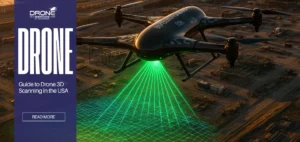
26 November 2025
Guide to Drone 3D Scanning in the USA
Guide to Drone 3D Scanning in the USA Drone-based 3D scanning is changing how teams collect site data. Contractors, developers,...
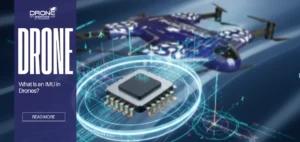
25 November 2025
IMU in Drones: Functions & Benefits
What Is an IMU in Drones? Functions, Benefits, and Accuracy Explained It’s easy to watch a drone fly and think...
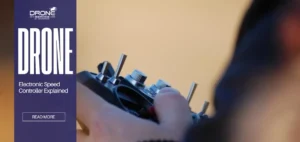
24 November 2025
Electronic Speed Controller (ESC) Explained
Electronic Speed Controller (ESC): What It Is, Types, and How It Works Have you ever wondered how drones go faster...
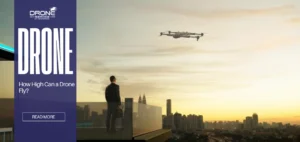
21 November 2025
How High Can a Drone Fly? Legal & Technical Limits
How High Can a Drone Fly? Legal & Technical Limits Drones behave differently at high altitudes and in windy conditions....
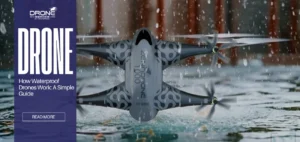
20 November 2025
How Waterproof Drones Work: A Simple Guide
How Waterproof Drones Work: A Simple Guide Waterproof drones are engineered to operate safely around water, unlike standard drones that...


















